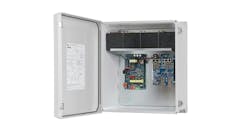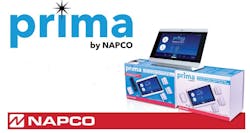One of the more interesting and rewarding aspects of security is when you are presented with a challenge to upgrade a project or provide enhancements required by a particular application.
We recently performed an alarm installation that seemed to be nothing but upgrades and enhancements, due to the fact that the premises was an old cottage being completely renovated, and the person who would be occupying the premises was totally deaf.
Since security and life safety systems are referred to as ‘Alarm’ systems and audible alarms are by far the most familiar to the installer, being faced with a client who could not hear an audible signal created an immediate design challenge.
Our objective was to provide the client with a safety and security system that would alert him of a variety of conditions in the premises without using any audible signals. In addition, the client desired Carbon Monoxide detectors as well as typical heat and smoke protection; he wanted to be notified if someone was at the front doors; he wanted to know if the phone was ringing, and he wanted to know all this whether he was inside the house, out on the grounds, or in his bed asleep. This was a project that enabled us to pull out all the stops.
VISTA
We decided to use the Honeywell (formerly ADEMCO) Vista 50P supervised wireless system because it provided the zone expansion, and signal processing flexibility the project demanded.
The client had previous experiences with a specialized product for the hearing impaired manufactured by COMPU-TTY, and we endeavored to incorporate this product into our design, without compromising the reliability of the professional Honeywell technology.
We managed to interface quite a selection of input and output devices into our system, thanks to the powerful Honeywell panel and accessory modules. Some of the signals were of a security nature, some were not, but all were to be controlled by the VISTA panel.
For more information on this product, visit www.honeywell.com.
CLIENT REQUIREMENTS
Here are some of the client’s requirements, and the methods we resorted to fulfill them.
Interface with two wireless door bell buttons. These units were comprised of a transmitter and a receiver module that plugged into a receptacle. We programmed the two buttons to a single receiver, then modified the receiver so that it would produce a contact closure, and then connected it to a hard-wired zone in the alarm panel.
Interface with pressure mats. Mats were placed in front of the two primary entrances to the house. We selected pressure mats which provided a closed circuit when they were activated, and used special open circuit #5817 ADEMCO transmitters
ner know when the phone was ringing, we used a Viking Ring Detector and connected it to a hard-wired zone.
Carbon Monoxide Detectors. We determined that the premises would require two CO detectors. We located one unit in the basement and used a #5817. The other CO detector went in the kitchen adjacent to the alarm panel, so we hard-wired it direct.
Controlling the alarm system. To provide the homeowner with the most convenient means of controlling the alarm system, we supplied a hard-wired control panel right on the panel itself, and a wireless backlit panel which could be carried to any room in the house.
All window and doors were contacted and we used #5816 for these zones. Also three wireless ADEMCO PIR’s were placed in strategic points throughout the premises. We used about 55 zones for this job.
The outputs were the biggest challenge. First, we supplied a digital cellular backup transmitter to supplement the dial-up connection to the central station. AMPS SUNSET is the imminent shutdown of the national analog cellular networks. This law has forced the alarm industry into using other technologies, and we decided on digital cellular.
The client was also concerned about being warned about hurricanes and tornadoes, so we added a COMPU-TTY compatible weather radio to the system which would send a signal if the National Weather Service sent out an alert over its special emergency channel.
The COMPU TTY equipment had a couple of complicated output devices. We decided to use the system anyway, because it provided features we could not readily duplicate otherwise.
The COMPU-TTY offered a wireless interior three-channel strobe unit, and a wireless “bed shaker” which is an electromechanical device which rattles the individual’s pillow in the event of an alarm. We were skeptical about what to expect from the equipment, but once we overcame the interfacing issues, and some RF range coverage problems owing to the wire lath walls and sheer size of the premises, we appreciated what these items added to the system.
SECO-LARM Enforcer
But we still had a large order to fill -- providing annunciation to the owner wherever he happened to be in or around the premises.
Several years ago I was asked to supply a specialty pager for a large warehouse where the guard would need to go on rounds, but still needed to stay in touch with the premises alarm system, whose keypad was located at his guard station.
At that time, I researched and found a proprietary pager made by SECO-LARM that filled the bill. This time around, I selected the six zone version of the SECO-LARM Enforcer.
My six zones were to be
1. Fire
2. Burglary
3. Carbon Monoxide
4. Weather radio
5. Door Bell
6. Phone ringing
Besides the fact that the pager produced a numeric zone display, it also had the essential feature of vibrating when it received a signal.
The SECO-LARM uses a portion of the RF spectrum shared by other services including Citizen’s Band. Although you might think this might have a negative impact on the pager’s performance, but the opposite was the case. For one thing, the SECO-LARM Enforcer transmitter is designed so that when it is triggered, it sends out five rounds of transmissions to the pager to be sure the signal gets through. It works.
Next, because to nature of RF is such that range can be limited by certain architectural factors or excessively large area that must be covered, a booster antenna is recommended by SECO-LARM, and we got a plain vanilla CB vehicle antenna and SWR meter at Radio Shack, and got all the range we needed even with our antenna mounted in a kitchen closet.
For more information on this product, visit www.secolarm.com.
TANE ALARM STROBE
Finally, we needed to provide visual annunciation while our client was outside his house. I needed strobe lights, and found the perfect solution in a mini strobe light from Tane Alarm. These small units feature an LED as a light source instead of the photoflash tubes commonly used in cameras of fire alarms.
These units are low current waterproof and have an extended life time. They come in red, clear, blue and red. I set up two clusters of four strobes; one for the front of the house, another for the back.
Blue=Burglary
Red= Fire
Yellow= CO or Weather Alert
Clear= Door bell or phone ringing.
(Remember, the homeowner has the pager which identifies the exact signal)
For more information on this product, visit www.tanealarm.com.
Since this project, I’ve offered these little flasher to clients to enhance safety on vehicle gates, and my customers love them. A real bang for the buck, as we say.
Getting all these things to operate when they were supposed to was a little more involved than a typical alarm system, because many of our signals were non-alarm, and we didn’t want the client to have to reset the alarm panel, or the central station to be notified if a guest was standing out front on a mat. Readers who are interested in more details of our design can contact us at Locksmith Ledger with their questions, and we’ll share our secrets.
We used a few slave relays and employed some creative zone grouping to accomplish exactly what we set out to do. We also had our go around with the electrician who couldn’t seem to provide us with a dial tone, and carpenters who found it necessary to cut wires and knock off sensors. But ultimately, the client was happy and we were proud to be able to meet his special needs.
Editor's Note: Photos that support this article will be available in the next few days. Please visit again for more insight.
Tim O'Leary
Tim O'Leary is a security consultant, trainer and technician who has also been writing articles on all areas of locksmithing & physical security for many years.





